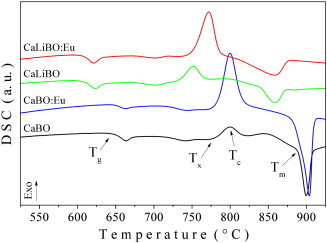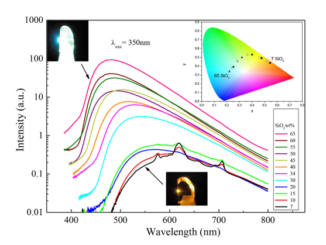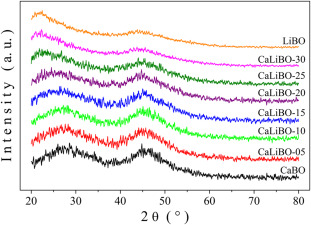
Structural, thermal and optical properties of CaBO and CaLiBO glasses doped with Eu3 +
Abstract: Thermal, structural and optical properties of undoped and Eu3 + doped CaBO and CaLiBO glasses were carried out by the Raman, FT-IR, UV–Vis absorption, fluorescence, thermoluminescence and DSC analyses. The addition of Li+ to the CaBO glass changes its characteristic temperatures by decreasing the glass transition, Tg, and melting temperatures to about 40 °C and 50 °C, respectively, due to a M–O interaction (M = modifier cation) that plays an important role in determining Tg. Moreover, a liquid–liquid phase separation observed in the binary system was avoided after Li+ addition, which allows the melting of glasses in lower temperatures (from 1450 °C to 1100 °C). In spite of the variations on thermal properties, small changes in the glass structure concerning boron–oxygen arrangements were seen by the Raman and FT-IR when compared to the spectra obtained from all prepared samples (variations < 10% in the relative area of Gaussian peaks) and were understood in terms of an isomerization reaction among the structural units into the glass network. Also important is that CaBO and CaLiBO glass matrices have a high transparency in the UV region (λcut-off < 190 nm) and this fact in combination with thermal, optical and structural characteristics indicates their high potential for optical applications.
Author(s): Rojas, S. S.; De Souza, J. E.; Yukimitu, K.; et al.
Journal of Non-Crystalline Solids
Volume: 398 Pages: 57-61 Published: 2014
DOI: https://doi.org/10.1016/j.jnoncrysol.2014.04.026
PDF: Structural, thermal and optical properties of CaBO and CaLiBO glasses doped with Eu3 +



